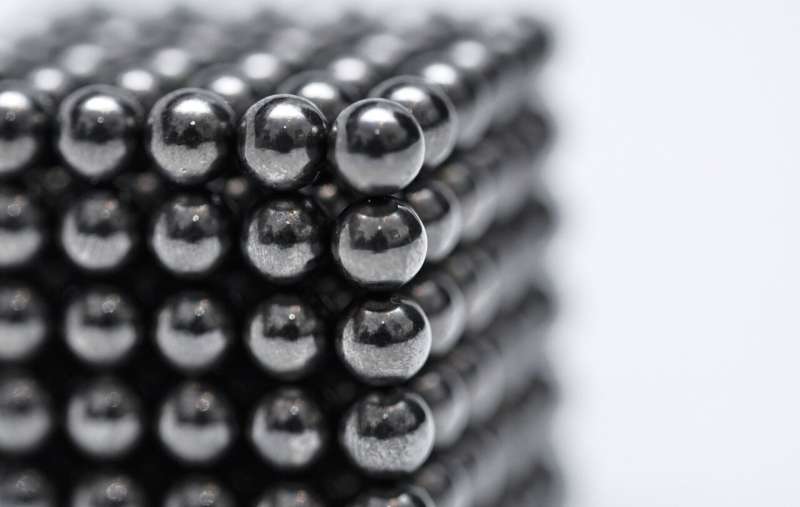This article has been reviewed according to Science X's editorial process and policies. Editors have highlighted the following attributes while ensuring the content's credibility:
fact-checked
trusted source
proofread
Child injuries due to high-powered magnet ingestion continue despite public education efforts and age restrictions

Despite efforts to educate the general public about the dangers of high-powered magnet toys, children continue to be injured by the small, high-powered, rare-earth balls after they swallow them or insert them into their nose or ear—even in households where parents fully understand the dangers of the toys, according to research presented during the 2023 AAP National Conference & Exhibition at the Walter E. Washington Convention Center.
Researchers of the abstract, "Socioeconomic Disparities in Pediatric High-Powered Magnet Ingestion Epidemiology and Outcomes," reviewed data of patients, age 21 and younger, from 2017–2019 with injuries from high-powered magnet ingestions/insertions. The data is from a retrospective cohort study with 25 U.S. children's hospitals. Researchers had previously found that these injuries are increasing despite age restrictions, warning labels, and educational public health campaigns explaining the dangers.
"High-powered, rare-earth magnetic balls or beads are often sold as fun, stress-relieving toys, but they are among the most dangerous toys when kids eat them. It doesn't matter what the child's socioeconomic or racial background is, whether the child is being watched, or if supervising adults know the magnets are dangerous—kids still manage to eat them and many of them need surgery to fix the internal damage caused by the magnets," said Minna Wieck, MD, BA, FAAP, assistant professor of pediatric surgery, UC Davis Children's Hospital. "The only foolproof way to make sure these injuries don't happen is to keep these types of magnets away from kids."
Of the 594 high-powered magnet exposures in the study, 74.3% were from higher socioeconomic backgrounds. Even though children from lower socioeconomic backgrounds are less likely to incur or seek care for a high-powered magnet exposure, the study found that those patients required more invasive procedures and surgeries, longer hospital admission, and more readmissions to save their lives.
The research also found that the circumstances around the injuries were different among children from lower or higher socioeconomic backgrounds. For example, children from lower socioeconomic backgrounds were less likely to have been directly supervised by a caregiver at the time of exposure. Conversely, children from higher socioeconomic backgrounds were more likely to have parents who knew that these rare-earth, high-powered magnet toys can be dangerous when swallowed. There was no difference in the time caregivers took to seek care or the size or number of magnets children swallowed or inserted.
"Parents almost never think their kid will 'be so dumb as to swallow' magnets. But kids are doing so more often, despite adult supervision and even when adults know that these magnets are potentially dangerous," Dr. Wieck said. "Since risk is proportional to access, the safest way to prevent injuries is to remove high-powered magnets from any environment where children may be present."
More information: Abstract Title: Socioeconomic disparities in pediatric high-powered magnet ingestion epidemiology and outcomes


















